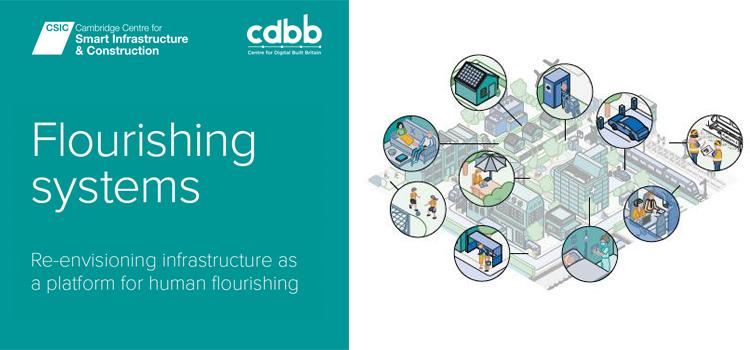
Submitted by Candy Smellie on Tue, 12/05/2020 - 12:21
Academia, government and industry have come together to publish a new white paper, Flourishing Systems, calling for a fundamental change in how we view and run our nation’s infrastructure in the face of climate change and the socio-economic recovery from Covid-19.
The central ideas in the paper are simple and radical: that the purpose of infrastructure is human flourishing, therefore infrastructure should be viewed and managed as a system of systems that serves people and the environment.
The paper is jointly published by the Centre for Digital Built Britain (CDBB), the Cambridge Centre for Smart Infrastructure and Construction (CSIC) at the University of Cambridge, with the support of the Department for Business, Energy and Industrial Strategy, the Institution of Civil Engineers, the Institution of Engineering and Technology and the Institution of Mechanical Engineers. Its development was supported by over 30 key experts and influencers from industry, government and academia.
Meeting the net-zero carbon by 2050, enabling the circular economy and investing in infrastructure to level up prosperity and well-being across the country are systemic challenges that require immediate and collaborative action.
To do this, the paper sets out a systems-based, people-focused view of infrastructure with a focus on:
- People – the key purpose of infrastructure is to support and serve society, we must get better at understanding and delivering the interconnected social, environmental and economic outcomes needed for human flourishing.
- Connections – infrastructure has become a complex, sociotechnical, interconnected system of systems. That should be reflected in the way we run the industry through a systems based strategy for national infrastructure and new metrics for infrastructure performance.
- Sustainability – it will become increasingly difficult to sustain infrastructure and society unless the system itself becomes sustainable, secure and resilient. This requires us to consider how each asset-level intervention affects the system, a make a deliberate move towards the circular economy in infrastructure.
- Digitalisation – bringing digital and physical assets together to create cyber-physical systems – smart infrastructure. We must recognise digital assets, such as data, information, algorithms and digital twins, as genuine ‘assets’, which have value and must be managed effectively.
This article first appeared on the CDBB website
